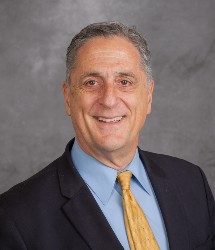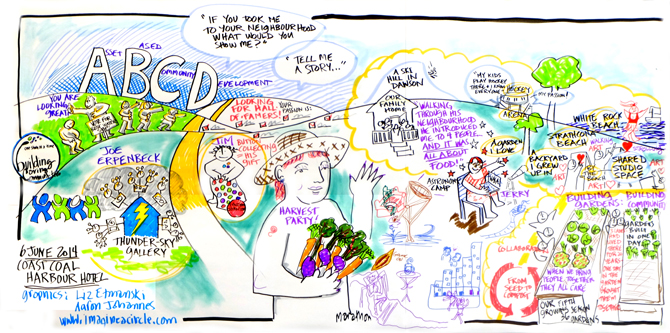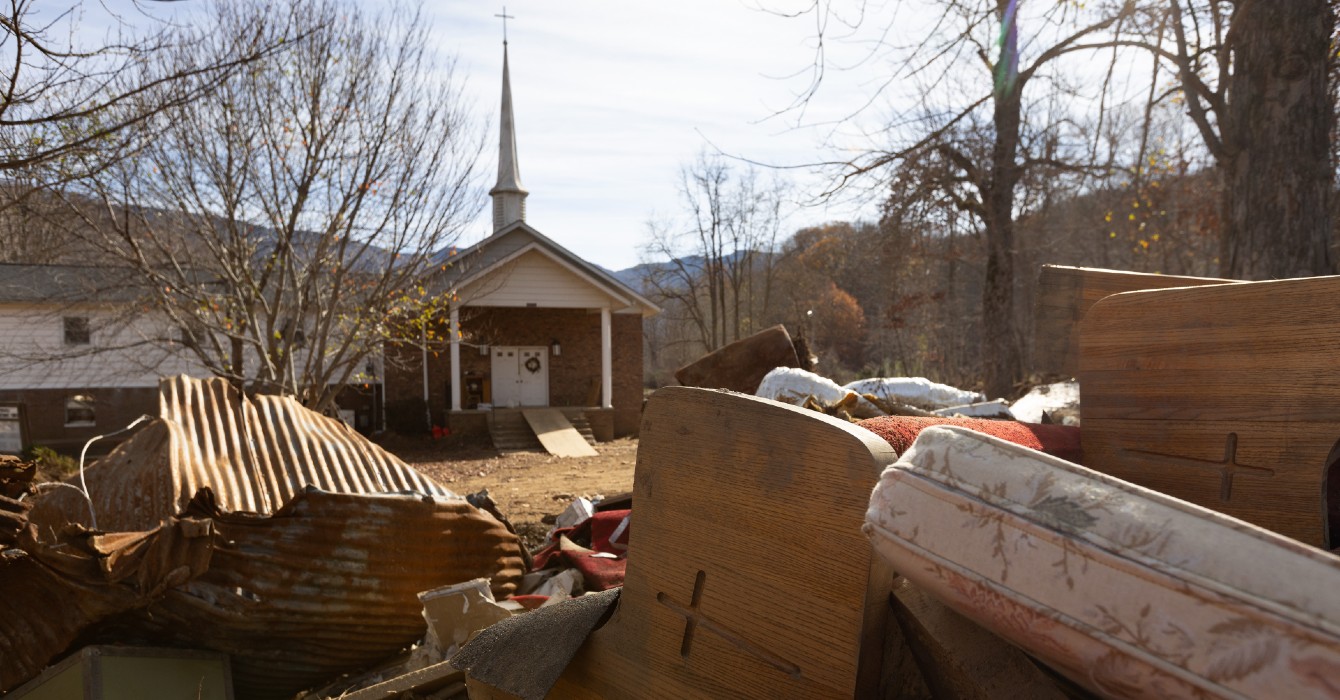Editor’s note: H Spees died on May 5, 2023.
Cities are often seen as the center of sin in the world, but H Spees encourages Christians to look at them differently.
“When you look at the cities with prophetic imagination, cities are gifts from God,” Spees says, pointing to the city of God in the book of Revelation.
Instead of letting a city become a place of suffering, our responsibility as a community is to make sure that the city works for everyone.

Drawing on his background of faith and work with civil rights leader John Perkins, Spees sees great opportunity for Christians to put their faith to work in their communities and make sure that no one is neglected.
Spees has worked for the city of Fresno since 2017, and before that, he worked for 40 years in community-based organizations. He is also an ordained minister.
Spees spoke with Faith & Leadership’s Chris Karnadi about how his faith informs his work and how Christians should approach cities. The following is an edited transcript.
Faith & Leadership: You’ve worn many hats throughout your career. What brought you to working for the city of Fresno?
H Spees: What brought me here most directly was my run for mayor of Fresno in 2016. I ran on a platform of community development, especially with investing in marginalized neighborhoods. According to the Brookings Institution, we [range] between first and fifth in terms of cities in America with the highest percentage of concentrated poverty neighborhoods.
I came in third in the primary, and then I supported the guy that came in second. He won, and then surprisingly, he turned around and said, “Look, you get this community stuff, and I get finances and the business side; let’s team up.”
So I became director of strategic initiatives for the Lee Brand administration. And then when Jerry Dyer, our current mayor, took over, he asked me to focus on one thing: homelessness.
So that’s basically how I have ended up here.
Before that, as my wife would say, we got severely off track. We grew up in Los Angeles. We were high school sweethearts. Because of her, I went to church and I had an encounter with Jesus Christ as a senior in high school.
About a year and a half or so later, when I was a student at USC, a civil rights leader by the name of John Perkins came to speak at our church. John challenged a group of us to come South for the summer. So I did an internship in Mississippi in 1972, came back and got married.
We went back to Mississippi and led a team from our church for a second summer, in ’73. And that summer stretched into 11 years. We spent 11 years living under the mentorship of John and Vera Mae Perkins. And in the last six of those years, I was setting up health centers in towns that didn’t have physicians, recruiting doctors and dentists and nurse practitioners to basically deliver health care.
I joke that everything I learned about urban development I learned in rural Mississippi, because the dynamics there are all the same that I deal with today — the issues of poverty and especially race and resource development in underresourced communities.
F&L: What were some of the lessons you took away from that time that you find are directly applicable right now in your work?
HS: The most profound takeaway for us was the concept of incarnational ministries and proximity. I think a shortcut for somebody like myself — who’s a boomer and the product of upwardly mobile post-World War II — to see what’s going on in the world is proximity and embedding, having the opportunity to live in the community, because everything else gets put into perspective.
In our experience in Mississippi, one of the things that was really profoundly undoing was really seeing how a group of African American folks coming out of Jim Crow that didn’t have the resources or the educational qualifications simply nailed their shoes to the floor and said, “We aren’t going to move until God uses us to change our community.”
And standing with the Rev. Perkins and Vera Mae, but also the older African American leaders that supported them, put my life into perspective. These are folks that had carved 150 acres of farmland out of red clay soil while basically being sharecroppers until they saved enough money to purchase their own farm.
Standing next to people like that, my inner life basically said, “My faith looks very superficial by comparison.” And that posture, that opportunity, being mentored and having a chance to walk alongside profound leaders like that — it impacts you.
F&L: How do you find your faith informing your work in homelessness?
HS: Two things that come to mind are the value of the human person — imago Dei — and shalom.
The challenge that any city has in America today, especially on the West Coast, is how you balance the tension between affirming the dignity of every person on the street and at the same time assuring the quality of life for residents and businesses that are severely impacted by encampments.
Those two values, holding those two things in tension, is a big deal. Theologically, to realize that Jesus identifies with that person on the street, that the whole Matthew 25 statement focuses on the least of these, the radical identification that Jesus made with humanity, but especially marginalized humanity, is breathtaking. And I think that drives the work.
One of the things that we do is encampment resolution. So when you see a young woman with meth scars on her face, beautiful young person in the grip of addiction, dragging all of her life’s belongings of today in a blue tarp along the street as her encampment is being relocated — at that point, imago Dei is very important, critical. And at the same time, there’s shalom.
Theologically, shalom is right relationship: relationship vertically with God, and vertically with the Earth and the environment, and horizontally with people across racial, cultural, economic, all barriers. Shalom from a civil society perspective is when all the systems and structures in the city work for everybody all the time and nobody’s left out.
Those two theological truths and energy sources, imago Dei and shalom, I think really drive our work around homelessness. And homelessness is the No. 1 social moral issue of our day.
We put together a thing called HART, the Homeless Assistance Response Team, made up of 18 outreach workers from an organization called the Poverello House. Those outreach workers are from every background, every gender identity, every ethnicity. Many of them have lived experience [with homelessness]. Many of them have themselves come through recovery.
They’re the ones that are engaging our most toxic, difficult encampments as we seek to offer housing and services for folks to resolve encampments in our community, one encampment at a time.
F&L: How do you think Christians should participate in the life of their cities?
HS: One of the things I’ve learned is how important it is to see cities as playgrounds rather than battlegrounds. Cities are a gift from God.
There are themes in literature and in our culture that paint the city as the repository of everything evil and tempting, and the rural, the bucolic, as somehow more virtuous.
But really what started in the garden in Genesis becomes a city in Revelation. It’s how we steward them that’s important. They can be the beloved communities we talk about. But also, they can become a catch basin for human misery.
I think it was in 2008, when I was doing my doctorate program — or 2009 — when worldwide there was one more person living in a city than in a rural area. It’s when the global reality shifted to being more urban. By 2050, 68% of the global population will live in cities. We must address the city, but we should address it through the lens of gift and the opportunity to see cities as playgrounds rather than battlegrounds.
I look at the city as a kind of circle that has three thirds: the private sector, the public sector and the nonprofit sector. The nonprofit sector is the one that’s sometimes the fastest growing, at least in the U.S. over the last several decades. But at the center there’s another sector, which is the community sector. This comes out of the work of John McKnight, who talks about asset-based community development. That’s where people actually live. That’s where mediating institutions, which is a civil society term for informal, voluntary associations, really come together.
The family, the local elementary school, the PTA, the sports teams, the small butcher shop — all of those things that make up a neighborhood. And I think, from the perspective of someone of faith, the question is, “Where is the church in that picture?”
I think that too often, Christians have oversimplified their view of the city, where they say that here’s the city and here’s the church in the center, and that if people would just come to Jesus then everything would be fine.
The reality is that the more complex picture of the city with the four sectors, three being institutional and one being community, really gives a much more robust opportunity for people of faith to engage.
If the community sector is the neighborhoods in the city, the people of God are already there. There are a million ways that folks are there, and the arrogance of a church that would say, “We’re going to take faith into the city” just completely overlooks the fact that it’s already there.
People of God are placed in positions in every one of the institutions making up the other sectors, whether it’s in public education or law enforcement or business or journalism or at the United Way or in the synagogue or part of the Islamic cultural center. Wherever it is, the people of God are positioned in all those spaces.
The Spirit is already there at work. And our job is to join.














